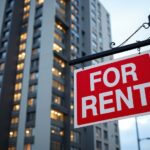In April, as the real estate industry celebrates New Homes Month, millennial buyers indicate they are prepared to compromise on space. According to a National Association of Home Builders (NAHB) survey, most millennial buyers would choose a smaller, feature-rich home for the same price—although they do want more square footage than prior generations.
According to NAHB, when compared to previous generations, millennial buyers most frequently request a home with a median interior space of 2,408 square feet. Nonetheless, a majority of millennial homebuyers (52%) state that they would prefer to buy a smaller home with better features and products than a larger one with fewer features.
“Buyers are willing to make compromises to find the best possible home for their families,” said NAHB Chairman Buddy Hughes, a home builder and developer from Lexington, N.C. “Our nation’s builders are willing to meet buyers where they are and construct a high-quality home to meet their family’s needs.”
Builders are building smaller homes, according to U.S. Census Bureau data. After remaining stable at 2,300 square feet from 2019–2022, the median home size fell from 2,200 square feet in 2023 to 2,150 square feet in 2024, the lowest level in 15 years. Builders are adding patios and porches on the outside of homes to expand the entire living area.
Home Builders Adapt to Housing Market Conditions
Due in part to concerns about housing affordability, home builders are building smaller homes. In 2025, rising property prices and mortgage rates are predicted to stay over 6%, making it extremely difficult for first-time and upgrade buyers to afford homes.
In order to assist families in becoming homeowners, builders are making some compromises in light of the current housing affordability situation. Nearly a third (29%) of builders lowered home prices in March, up from 26% in February, according to the most recent NAHB/Wells Fargo Housing Market Index. March had an average price reduction of 5%, which was the same as the month before. Similar to February, about 59% of builders used sales incentives in March.
“Homeownership is key to strengthening communities across the country and helps families increase their level of economic prosperity,” Hughes said. “The residential construction industry has solutions to help bring down the cost of housing and is willing to work with all levels of government to solve affordability challenges, so more families have a place to call their own.”
At NAHB’s Legislative Conference, scheduled for June 11 in Washington, D.C., members will talk with their representatives of Congress on housing priorities and affordability solutions in response to the persistent housing attainability challenges that families across face.
To read more, click here.







